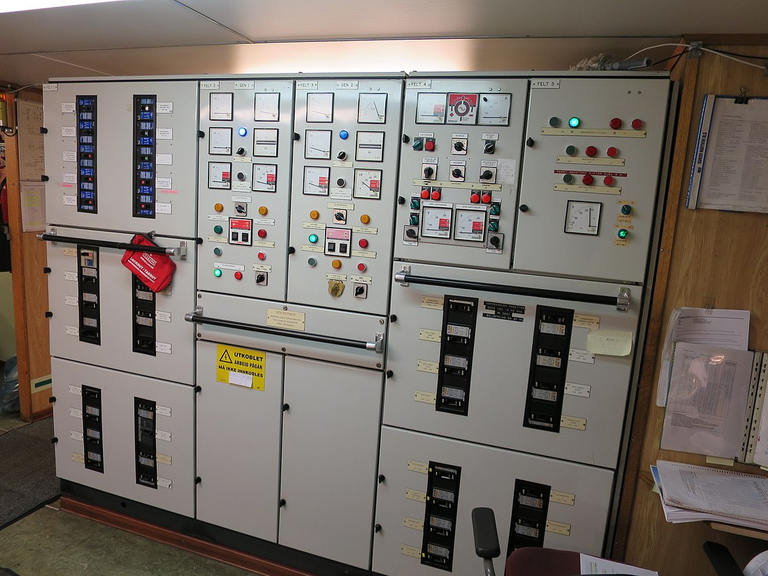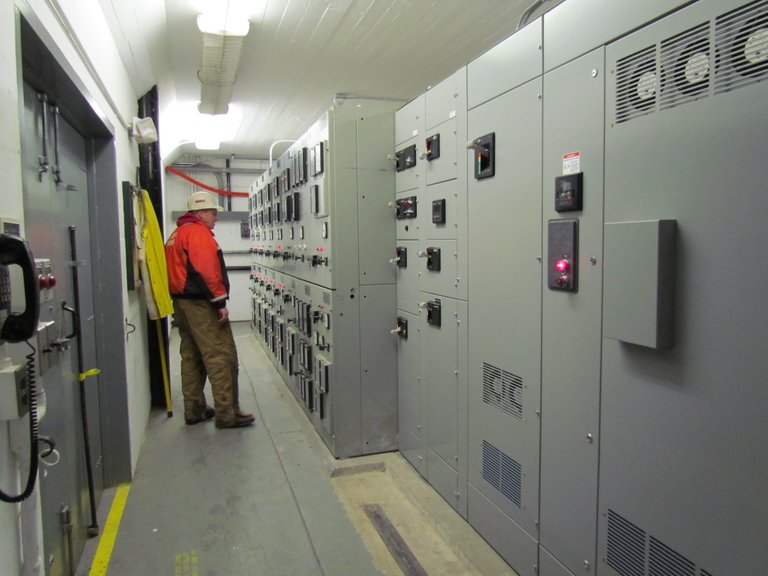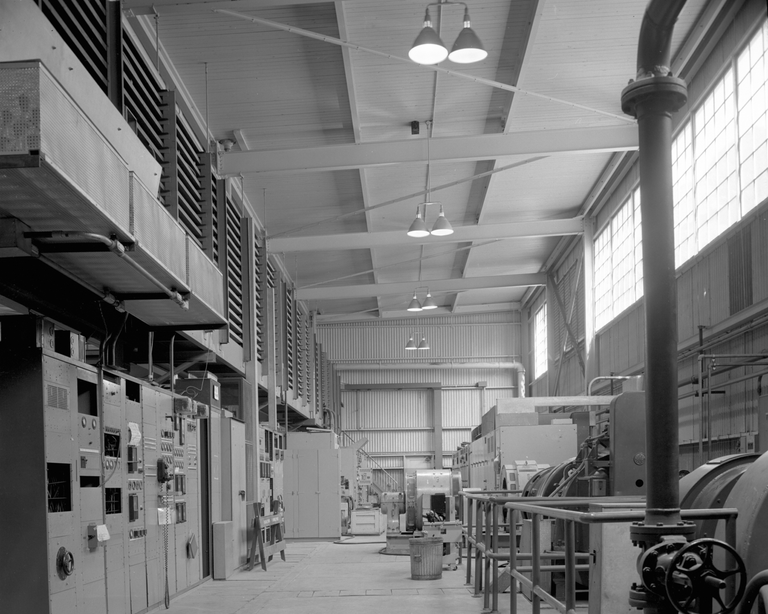Why parallel generators?

To achieve a higher output, two or more power sources of the same size and output voltage are connected in parallel. When connecting in parallel, keep polarity in mind when connecting the outputs. The output voltage does not change, but the current does. Two 10 KVA units with 120-volt output, for example, can be paralleled to deliver 20 KVA to the load. When two power sources are linked, extra caution is needed. They must be connected in step, which means the positive terminal of one unit must be connected to the positive terminal of the other unit, and vice versa for the negative terminals. The same phases must be paired together on three-phase units.
As the world becomes more dependent on electric power to operate and develop, backup power systems, such as generators, are becoming more important in ensuring a steady supply of electricity. Your generator selection is mainly determined by the amount of backup power available for your particular application. Depending on the situation, you can only need a small amount of backup power to keep basic appliances or mission-critical equipment running. Or, as is usual in high-availability settings, you can need to be able to accommodate your full load and then some. In any case, finding a generator that exactly meets your specifications is not always possible. The output power capacity of standard generator units on the market can often far exceed or far fall short of your minimum or maximum requirements. This is one application where paralleling generators can really shine.
Using identical generators, or at least have the same output rating and alternator pitch, is the simplest way to set up a parallel device. Having two or more variable output generators is another versatile choice for meeting your power needs. In either case, they can be paired in parallel with paralleling switchgear to achieve optimum output during peak demand or the desired minimum output for off periods. Parallel power generation systems have several advantages. The advantages of parallel standby power systems over single large generator units have always been important.

A typical main electrical switchboard | Photo Credit: Ulflarsen
Due to the higher cost, limited space, and high degree of complexity involved in configuration and maintenance, such systems have generally been limited to large projects or mission critical applications. Until recently, many companies, both large and small, avoided running generator sets in parallel. It is now much easier to run systems in parallel and benefit from the additional benefits that these systems can offer, thanks to the advent of advanced integrated digital control technologies.
Paralleling various sources improves reliability, load management flexibility, and maintenance capabilities while minimizing downtime. Multiple generators connected to a common bus can better serve emergency and business critical loads, particularly in terms of system response time and dynamic load response once the system is up and running. More complex parallel generator standby systems, on the other hand, have major advantages in terms of efficiency and redundancy.
Redundancy, performance, expandability, and ease of maintenance and serviceability are just a few of the benefits. For critical loads, the redundancy inherent in the parallel operation of multiple generators is more reliable than a single generator unit. If one of the backup generators fails, the backup loads are prioritized and redistributed among the remaining generators in the system. In certain situations, the emergency loads that need the most reliable backup power make up a small portion of the overall power provided by the system.
In a parallel system, this ensures that the majority of emergency components will have the redundancy they need to keep running even though one of the units fails. When using a N+1 configuration, one generator can be taken offline for maintenance while the other serves the necessary loads. An N+1 generator configuration would also improve the generator system's reliability from 98 percent to 99.96 percent by having a working spare.

A personnel monitoring the synchronization panel. | Photo Credit: US Army Corps of Engineers
A more reliable system increases stability while lowering costs and losses. In most installations, load levels do not stay constant. Variations in power demand can cause a single larger generator to operate at less than 30% capacity, resulting in wet stacking. For prime movers, the optimal operating point is between 75% and 80% of their valued value. The generator will be at its most efficient at this stage. The cost of fuel and repairs would also be reduced.
A generator load control feature can be added to the paralleling control system, allowing it to add and remove generators in response to the system's actual load/demand. A generator removal time delay enables this feature, which can cause generators to be removed from the bus as a function of the appropriate generator percentage loading set by the operator. If the load shifts and demand exceeds 90% of the bus's power, for example, an additional generator can be started, synchronized, and paralleled to the bus without delay.
The elimination of single points of failure is one of the key goals of redundancy. The aim is to eliminate single points of failure, but care must be taken to avoid simply moving them to another part of the system. To avoid failure modes that compromise reliability, the controls that allow redundancy must also be examined. Paralleled generator sets that rely on a single master control for signals to start and close to a paralleled bus.
For example, effectively replace one failure point with two, since the master control and the communication connection between the master and the generator sets each reflect a single point of failure. Dual hot-backup control systems, redundant communication pathways, redundant best battery select dc power supplies, multiple breakers, multiple power pathways, and a well-documented process for device recovery if a part fails are all features of a well-engineered paralleling system.

Interior of generator room. | Photo Credit: The U.S. National Archives
In most cases, each generator in a parallel system is made up of four to six hardwired together microcontrollers. If the individual generators are made by different manufacturers and the controls are built on a mix of analog and digital technology, the installation becomes more complicated. Setting up a high capacity generator in parallel and having it ready to provide backup power usually takes about 4 weeks. It can take less time in smaller applications, such as private residences and small businesses. In both cases, the construction phase entails six major parts and is a complicated process that would necessitate the assistance of an experienced electrical technician.
As a result, parallel operation is advantageous when larger units are unavailable for the necessary input voltage and load. For example, if your building is powered by 120 volts and your load draws 50 amps, you'll need a 6 kVA unit. At full load, one 3 kVA unit provides 25 amps, so two units in parallel provide 50 amps. This isn't the only choice available. You could purchase a transformer to raise the voltage and a 6 kVA unit to supply the necessary electricity.
In either case, two units can be purchased to perform the same task, but the first option is less expensive. If you want to increase the availability of load current to the device you already have, parallel operation is also useful. If the current unit is unable to handle the load, a larger unit will be required. Instead of purchasing a larger unit and discarding the smaller one, you might purchase another unit of the same size and connect them in parallel.
Again, parallel operation of generators that is connected in larger system must still have the same frequency and terminal voltage throughout the machine. Since the output conductors are tied together, it implies that the real power-frequency and reactive power-voltage characteristics can be plotted back to back. In the case of paralleling the generators with the infinite bus, it will essentially ‘’floating” in the line. It means that the it supplies little amount of real power and little reactive power or sometimes no reactive power.
In some cases, generators are paralleled to line that has a slightly lower frequency than the operating system, then the power supplied by the generator is negative. It means that the electrical energy being consumed because it is a running motor. The condition four of paralleling applies in this state where incoming generator must have slightly higher frequency compared to the operating generator to ensure that the generator comes to line supplying power instead of consuming it. The parallel operation of generators plays a significant role in the growing demand of the industry as it ensures uninterrupted supply of power.
Paralleling increase the reliability, expandability, and flexibility of the operation. It is reliable as backup power systems are readily available if there are unlikable situation happens during the operation. It maintains power even one of the generators fails to function. Flexibility in a way that having multiple units in parallel operates more effective than operate in single large-sized generator. The efficiency of the power supplied is continues without a doubt. Moreover, generators in parallel operation performs to the highest level where applications are functional for today’s demand.
Your content has been voted as a part of Encouragement program. Keep up the good work!
Use Ecency daily to boost your growth on platform!
Support Ecency
Vote for Proposal
Delegate HP and earn more
Hi, @juecoree your dissertation about parallel generators I enjoyed it very much, from the technical point of view, as well as, I took a trip back to the days of my Electrical Machines training. Thank you for providing and sharing this top-notch information.
I am glad to hear that I have imparted relevant information on the topic. !PIZZA
@alfonsoalfonsi! I sent you a slice of $PIZZA on behalf of @juecoree.
Learn more about $PIZZA Token at hive.pizza (1/10)
Thanks for your contribution to the STEMsocial community. Feel free to join us on discord to get to know the rest of us!
Please consider supporting our funding proposal, approving our witness (@stem.witness) or delegating to the @stemsocial account (for some ROI).
Please consider using the STEMsocial app app and including @stemsocial as a beneficiary to get a stronger support.
Dear @juecoree, Your article is interesting!